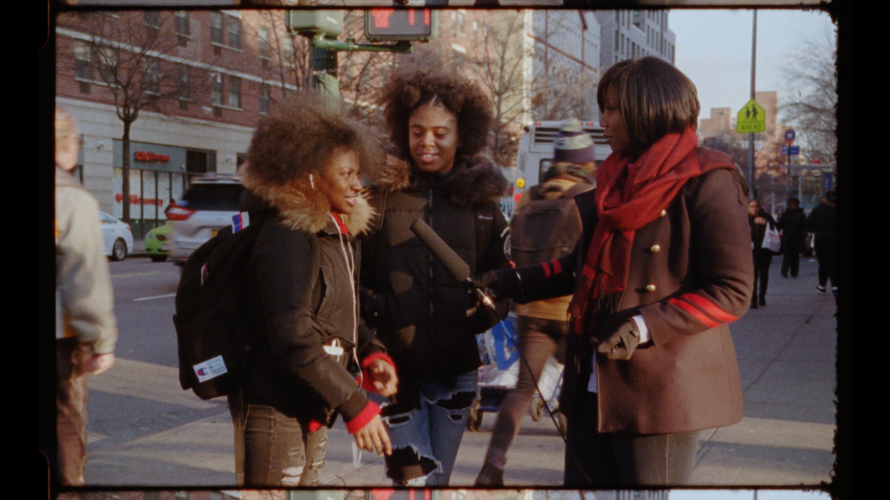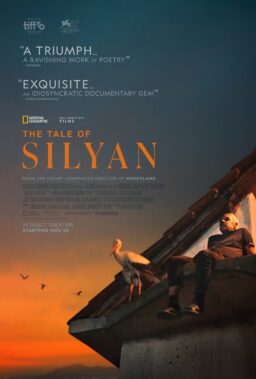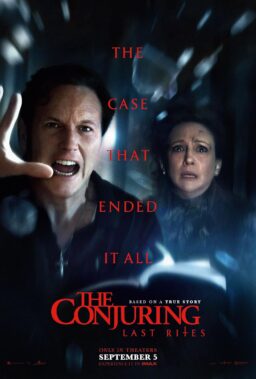At any film festival, it’s natural for connections between different works to arise. Certain ideas inevitably echo across films with different styles, and then, suddenly, hypothetical double features organically develop in your head. I saw two films at True/False that interrogate racial or ethnic identity through an experimental lens, and while both are from very different lived experiences, they play off each other in riveting ways.
The first is Ja’Tovia Gary’s “The Giverny Document (Single Channel),” a 43-minute film about the strength and precariousness of black womanhood in America. The crux of the movie features Gary standing at the intersection of 116th Street and Malcolm X Boulevard in Harlem asking black girls and women one question: “Do you feel safe in your body?” Responses vary based on age and the interpretation of the question: young women tend to say no, citing harassment or violence or stalking that they’ve experienced, while middle-aged or older women, even those who are infirm, answer affirmatively because of their comfort with the neighborhood or their relationship to God.
These interviews ground the rest of the film, which frequently cuts between different scenes from Gary’s own work and archival footage: Fred Hampton giving a talk about the importance of education in Black Liberation to combat the rise of Negro imperialists; Gary gliding through Claude Monet’s gardens in Giverny, France; an audio recording of Diamond Reynolds’ video of the murder of her boyfriend Philando Castile at the hands of the police played over collages and direct animation; Nina Simone, sitting at the piano, emotionally struggling to complete her cover of Morris Albert’s “Feelings” at the 1976 Montreux Jazz Festival. “The Giverny Document (Single Channel)” opens with cell phone footage-turned-meme of “Love & Hip-Hop Star” Joseline Hernandez asking the camera, “Can I live? Can I f**king live?” That question, along with “Do you feel safe in your body?”, structures “The Giverny Document,” and defines Gary’s method.
The overall effect of “The Giverny Document” is akin to structured sensory overload via media scholarship. (I can only assume the three-channel installation version that lives in the gallery and museum space only amplifies this idea.) Through historical sources and her own artistic inquiries, “Giverny” paints a prismatic portrait of contemporary black womanhood, one that assumes different personas based on environment (Gary wears a wig during her woman-on-the-street scenes but showcases her shaved head while in the garden) and modulates within the whole spectrum of human emotion, from ecstasy to grief. The goal seems to be to situate the viewer within that layered mental space. One of the most interesting connections Gray draws is between Nina Simone and Diamond Reynolds: Simone’s anger towards Albert’s soft-rock single (“I do not believe the conditions that produced a situation that demanded a song like that!” she exclaims to the audience) and Reynolds’ in-the-moment grief after her boyfriend’s murder are both examples of feeling experienced through an intermediary. They have to live with the aftermath of other’s actions, albeit on a sliding scale of urgency. It underscores the idea that black womanhood isn’t a monolith that subsumes complexity. Instead, it exhibits it.

Sky Hopinka’s debut feature “małni—towards the ocean, towards the shore” similarly examines identity through slow cinema techniques. A profile of two Chinookan people in the Pacific Northwest as they contemplate their relationships with their personhood, the spirit realm, and larger society, “małni—towards the ocean, towards the shore” also situates us in the Native mindset, how it’s as rooted in the land and sky as it is in the space between them. We watch as the subjects, Sweetwater Sahme and Jordan Mercier, walk through the wilderness and move through familiar spaces. Hopinka paints a portrait of identity through his subjects’ words and how they engage with their surroundings. He observes the landscape and captures speech, but communicates it elliptically, capturing the poetry of motion and stasis. A long sequence featuring a Native dance in a gymnasium, with an entire community gathered together in ritual, speaks volumes about ethnic identity and how it manifests in physical spaces. It’s a tether to others and the Earth it stands upon.
Though Hopinka mostly takes an observational stance, he visually intervenes by carving out a gentle spiritualism through his stunning photography of the Pacific Northwest in all its vibrant, resplendent glory. His use of color in “małni—towards the ocean, towards the shore” is nothing short of astonishing: red and greens almost erupt off the screen, entrancing the eye while Hopinka’s camera drags it at a measured pace. The film features lengthy sequences of people walking through the wilderness to nearby clearings or underneath waterfalls. The documentary closes with Mercier and a friend walking to the ocean, and the way Hopinka films their brief journey approaches Terrence Malick-esque levels of reverence for nature. In terms of sheer spectacle, “małni—towards the ocean, towards the shore” was one of the most awe-inspiring films I saw at the festival.












